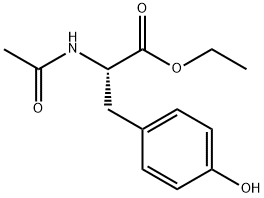3-Acetyl-2,5-dimethylthiophene
- CAS NO.:2530-10-1
- Empirical Formula: C8H10OS
- Molecular Weight: 154.23
- MDL number: MFCD00009763
- EINECS: 219-779-5
- SAFETY DATA SHEET (SDS)
- Update Date: 2024-07-16 16:27:54

What is 3-Acetyl-2,5-dimethylthiophene?
Chemical properties
CLEAR COLOURLESS TO ORANGE LIQUID
Chemical properties
A liquid with burnt-roasted, nutty odor
Occurrence
Reported found in boiled and cooked beef.
The Uses of 3-Acetyl-2,5-dimethylthiophene
It is used in the synthesis of heterocyclic ketimines, 3-acetyl-2,5-dimethylthiophene thiosemicarbazone and 3-acetyl-2,5- dimethylthiophene semicarbazone.
The Uses of 3-Acetyl-2,5-dimethylthiophene
3-Acetyl-2,5-dimethylthiophene was used in the synthesis of heterocyclic ketimines, 3-acetyl-2,5-dimethylthiophene thiosemicarbazone and 3-acetyl-2,5- dimethylthiophene semicarbazone.
What are the applications of Application
3-Acetyl-2,5-dimethylthiophene is used in the synthesis of heterocyclic ketimines, 3-acetyl-2,5-dimethylthiophene thiosemicarbazone and 3-acetyl-2,5- dimethylthiophene semicarbazone.
Definition
ChEBI: 3-Acetyl-2,5-dimethylthiophene is an aromatic ketone.
Safety Profile
A poison by intraperitoneal route. A flammable liquid. When heated to decomposition it emits toxic vapors of SOx and NOx
Properties of 3-Acetyl-2,5-dimethylthiophene
| Boiling point: | 105-108 °C/15 mmHg (lit.) |
| Density | 1.086 g/mL at 25 °C (lit.) |
| refractive index | n |
| Flash point: | 210 °F |
| storage temp. | Refrigerator, under inert atmosphere |
| solubility | Chloroform (Slightly), DMSO (Slightly) |
| form | Oil |
| color | Dark Yellow to Very Dark Yellow |
| Specific Gravity | 1.1 |
| Odor | at 0.10 % in propylene glycol. burnt roasted meaty |
| Water Solubility | Soluble in alcohol. Insoluble in water. |
| JECFA Number | 1051 |
| BRN | 112095 |
| CAS DataBase Reference | 2530-10-1(CAS DataBase Reference) |
| NIST Chemistry Reference | 3-Acetyl-2,5-dimethylthiophene(2530-10-1) |
Safety information for 3-Acetyl-2,5-dimethylthiophene
| Signal word | Warning |
| Pictogram(s) |
 Exclamation Mark Irritant GHS07 |
| GHS Hazard Statements |
H315:Skin corrosion/irritation H319:Serious eye damage/eye irritation H335:Specific target organ toxicity, single exposure;Respiratory tract irritation |
| Precautionary Statement Codes |
P261:Avoid breathing dust/fume/gas/mist/vapours/spray. P304+P340:IF INHALED: Remove victim to fresh air and Keep at rest in a position comfortable for breathing. P305+P351+P338:IF IN EYES: Rinse cautiously with water for several minutes. Remove contact lenses, if present and easy to do. Continuerinsing. P405:Store locked up. |
Computed Descriptors for 3-Acetyl-2,5-dimethylthiophene
New Products
(S)-3-Aminobutanenitrile hydrochloride 4-Methylphenylacetic acid N-Boc-D-alaninol N-BOC-D/L-ALANINOL Tert-butyl bis(2-chloroethyl)carbamate 3-Morpholino-1-(4-nitrophenyl)-5,6-dihydropyridin- 2(1H)-one Furan-2,5-Dicarboxylic Acid Tropic acid 1-Bromo-3,5-Di-Tert-Butylbenzene S-2-CHLORO PROPIONIC ACID ETHYL ISOCYANOACETATE 2-Bromo-1,3-Bis(Dimethylamino)Trimethinium Hexafluorophosphate 4-IODO BENZOIC ACID 3-NITRO-2-METHYL ANILINE 1-(2,4-DICHLOROPHENYL) ETHANAMINE (2-Hydroxyphenyl)acetonitrile 4-Bromopyrazole 2-(Cyanocyclohexyl)acetic acid 4-methoxy-3,5-dinitropyridine 1-(4-(aminomethyl)benzyl)urea hydrochloride 2-aminopropyl benzoate hydrochloride diethyl 2-(2-((tertbutoxycarbonyl)amino) ethyl)malonate tert-butyl 4- (ureidomethyl)benzylcarbamate Ethyl-2-chloro((4-methoxyphenyl)hydrazono)acetateRelated products of tetrahydrofuran








You may like
-
 3-Acetyl-2,5-dimethylthiophene CAS 2530-10-1View Details
3-Acetyl-2,5-dimethylthiophene CAS 2530-10-1View Details
2530-10-1 -
 2033-24-1 98%View Details
2033-24-1 98%View Details
2033-24-1 -
 1975-50-4 98%View Details
1975-50-4 98%View Details
1975-50-4 -
 2-HYDROXY BENZYL ALCOHOL 98%View Details
2-HYDROXY BENZYL ALCOHOL 98%View Details
90-01-7 -
 2-Chloro-1,3-Bis(Dimethylamino)Trimethinium Hexafluorophosphate 221615-75-4 98%View Details
2-Chloro-1,3-Bis(Dimethylamino)Trimethinium Hexafluorophosphate 221615-75-4 98%View Details
221615-75-4 -
 61397-56-6 CIS BROMO BENZOATE 98%View Details
61397-56-6 CIS BROMO BENZOATE 98%View Details
61397-56-6 -
 14714-50-2 (2-Hydroxyphenyl)acetonitrile 98+View Details
14714-50-2 (2-Hydroxyphenyl)acetonitrile 98+View Details
14714-50-2 -
 118753-70-1 98+View Details
118753-70-1 98+View Details
118753-70-1